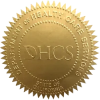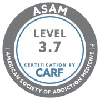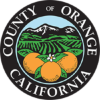Dangerous substances have an uncanny ability to make one believe they are experiencing real pleasure for a moment, only to leave a path of destruction in their wake. We are going to get into the most addictive drugs, but first let’s cover a bit about addiction on a whole.
Addiction Psychologically: The Inner Chaos
On a psychological level, addiction is like a “noisy room” within one’s mind—a constant chatter of escapism, denial, and rationalization. Many turn to addictive substances or behaviors in a bid to soothe traumatic memories, cope with stress, or escape the harsh realities of life. The emotional baggage becomes too tough to carry, and so we look for solace where ever we can.
Addiction Physically: The Body’s Deception
Physically, addiction is a cruel master. With initial use, drugs or addictive behaviors may give the illusion of relief or euphoria. But over time, the body starts to crave more while building tolerance. The higher doses become the new normal. The brain’s reward system gets hijacked, making the addictive substance seem indispensable for survival.
It’s as though a person’s body is tricked into believing it needs poison to thrive.
Addiction as a Disease
Over the years, the perception of addiction has evolved. Once dismissed as a moral failing or a mere lack of willpower, today, it’s recognized as a chronic disease, akin to diabetes or hypertension. Why? Because the changes in the brain due to addictive substances can be long-lasting, pushing people into compulsive, uncontrollable drug seeking and use, even in the face of negative consequences.
Today we see addiction not as a personal failing but as a disease, demanding care, understanding, and above all, compassion.
In essence, addiction is a cry from the soul, yearning for genuine connection and inner peace. This is where the root causes come into play and affect everything that comes with addiction.

Despite all that, some substances have higher potential for addiction. Here are some of the most addictive drugs.
Most Addictive Drugs: The Heavy Hitters
- Nicotine: Found in cigarettes, cigars, and vaping devices, nicotine is considered one of the most addictive substances on the planet. Roughly two-thirds of Americans who tried smoking have become addicted, a statistic that speaks volumes.
- Alcohol: Almost socially acceptable in many cultures, alcohol is deceptive. According to the World Health Organization, over 3 million deaths annually are related to alcohol misuse. Find out more about alcohol detox.
- Cocaine: This stimulant can cause people to feel euphoric and alert. Sadly, the National Institute on Drug Abuse states that about 14-20% of those who use cocaine will develop an addiction. Cocaine detox.
- Heroin: As an opiate, it’s both seductive and treacherous. Around 25% of individuals who try heroin at least once become addicted. Find out about Heroin Detox.
- Methamphetamine: Known on the streets as meth or crystal meth, this drug can keep users awake for days. The Journal of Neuroscience has found that meth use can lead to long-term cognitive deficits. Find out about meth detox.
- Benzodiazepines: Prescribed for anxiety and sleep disorders, these can lead to addiction if misused. Roughly 44% of users become dependent. Examples: Xanax, Valium, Ativan.
- Crack Cocaine: More potent than regular cocaine, crack has an even higher addiction rate.
- Barbiturates or “downers”: They slow down the central nervous system and can be as addictive as its stimulant counterparts.
- Opioid Painkillers: Medications like OxyContin and Vicodin, when misused, can lead to a spiral of addiction, with a shocking 21-29% of patients misusing them. Find out about painkiller detox.
- Bath Salts: A synthetic stimulant, its effects can be unpredictable and, unfortunately, addictive.
Decoding the Numbers behind the Most Addictive Drugs
- In 2019, around 58.4 million people worldwide suffered from drug use disorders.
- Deaths directly attributed to drug use have increased by 60% in the last decade.
- The United States, grappling with the opioid crisis, has seen 130 Americans die every day from an opioid overdose.
These numbers aren’t just statistics. They represent individuals, each with a unique story, torn apart by the talons of addiction.

Glimmers of Hope
Amidst these bleak scenarios, there’s hope. Treatment centers across the globe have been making significant progress in helping individuals recover. Cognitive-behavioral therapy, group therapy, and even experimental treatments have proven, successful results.
The key is to remember that one is not alone in this journey. Whether you’re battling addiction or know someone who is, there’s help.
If you or a loved one is entangled in the clutches of addiction, remember, there’s hope. At Saddleback Recovery in Orange County, CA, we are here to help you begin your path of healing and sobriety. Don’t walk this path alone. Call (877) 843-5724 today.








